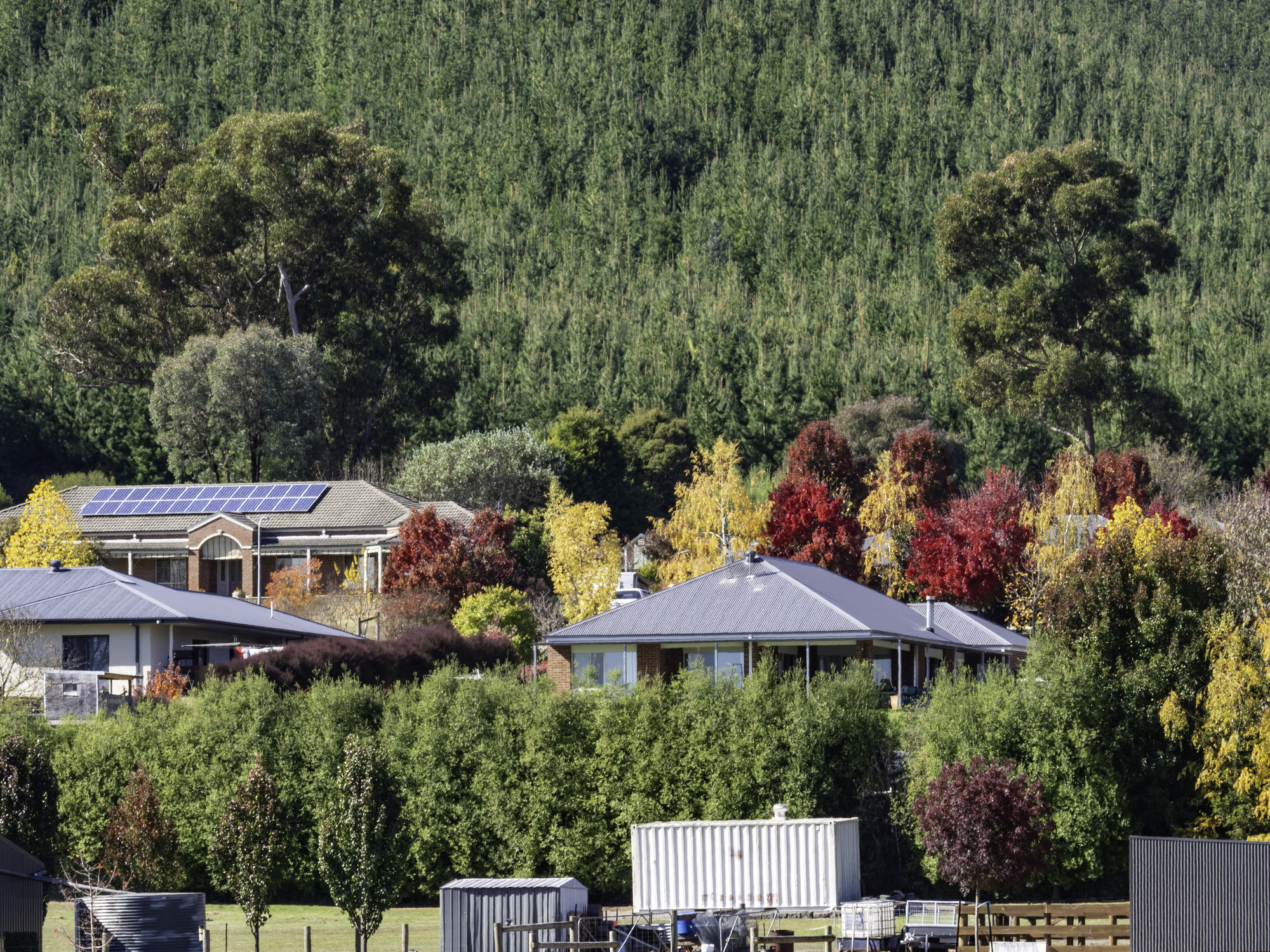Italy, Land of Uncollected Garbage, Combines Running With Trash Pickup
At the World Plogging Championship, contestants have lugged in tires, TVs and at least one Neapolitan coffee maker
GENOA, Italy—Renato Zanelli crossed the finish line with a rusty iron hanging from his neck while pulling 140 pounds of trash on an improvised sled fashioned from a slab of plastic waste.
Zanelli, a retired IT specialist, flashed a tired smile, but he suspected his garbage haul wouldn’t be enough to defend his title as world champion of plogging—a sport that combines running with trash collecting.
A rival had just finished the race with a chair around his neck and dragging three tires, a television and four sacks of trash. Another crossed the line with muscles bulging, towing a large refrigerator. But the strongest challenger was Manuel Jesus Ortega Garcia, a Spanish plumber who arrived at the finish pulling a fridge, a dishwasher, a propane gas tank, a fire extinguisher and a host of other odds and ends.
“The competition is intense this year,” said Zanelli. Now 71, he used his fitness and knack for finding trash to compete against athletes half his age. “I’m here to help the environment, but I also want to win.”
Italy, a land of beauty, is also a land of uncollected trash. The country struggles with chronic littering, inefficient garbage collection in many cities, and illegal dumping in the countryside of everything from washing machines to construction waste. Rome has become an emblem of Italy’s inability to fix its trash problem.
So it was fitting that at the recent World Plogging Championship more than 70 athletes from 16 countries tested their talents in this northern Italian city. During the six hours of the race, contestants collect points by racking up miles and vertical distance, and by carrying as much trash across the finish line as they can. Trash gets scored based on its weight and environmental impact. Batteries and electronic equipment earn the most points.
A mobile app ensures runners stay within the race’s permitted area, approximately 12 square miles. Athletes have to pass through checkpoints in the rugged, hilly park. They are issued gloves and four plastic bags to fill with garbage, and are also allowed to carry up to three bulky finds, such as tires or TVs.
Genoa, a gritty industrial port city in the country’s mountainous northwest, has a trash problem that gets worse the further one gets away from its relatively clean historic core. The park that hosted the plogging championship has long been plagued by garbage big and small.
“It’s ironic to have the World Plogging Championship in a country that’s not always as clean as it could be. But maybe it will help bring awareness and things will improve,” said Francesco Carcioffo, chief executive of Acea Pinerolese Industriale, an energy and recycling company that’s been involved in sponsoring and organizing the race since its first edition in 2021. All three world championships so far have been held in Italy.
Events that combine running and trash-collecting go back to at least 2010. The sport gained traction about seven years ago when a Swede, Erik Ahlström, coined the name plogging, a mashup of plocka upp, Swedish for “pick up,” and jogging.
“If you don’t have a catchy name you might as well not exist,” said Roberto Cavallo, an Italian environmental consultant and longtime plogger, who is on the world championship organizing committee together with Ahlström.
Saturday’s event brought together a mix of wiry trail runners and environmental activists, some of whom looked less like elite athletes.
“We like plogging because it makes us feel a little less guilty about the way things are going with the environment,” said Elena Canuto, 29, as she warmed up before the start. She came in first in the women’s ranking two years ago. “This year I’m taking it a bit easier because I’m three months pregnant.”
Around two-thirds of the contestants were Italians. The rest came from other European countries, as well as Japan, Argentina, Uruguay, Mexico, Algeria, Ghana and Senegal.
“I hope to win so people in Senegal get enthusiastic about plogging,” said Issa Ba, a 30-year-old Senegalese-born factory worker who has lived in Italy for eight years.
“Three, two, one, go,” Cavallo shouted over a loudspeaker, and the athletes sprinted off in different directions. Some stopped 20 yards from the starting line to collect their first trash. Others took off to be the first to exploit richer pickings on wooded hilltops, where batteries and home appliances lay waiting.
As the hours went by, the athletes crisscrossed trails and roads, their bags became heavier. They tagged their bulky items and left them at roadsides for later collection. Contestants gathered at refreshment points, discussing what they had found as they fueled up on cookies and juice. Some contestants had brought their own reusable cups.
With 30 minutes left in the race, athletes were gathering so much trash that the organisers decided to tweak the rules: in addition to their four plastic bags, contestants could carry six bulky objects over the finish line rather than three.
“I know it’s like changing the rules halfway through a game of Monopoly, but I know I can rely on your comprehension,” Cavallo announced over the PA as the athletes braced for their final push to the finish line.
The rule change meant some contestants could almost double the weight of their trash, but others smelled a rat.
“That’s fantastic that people found so much stuff, but it’s not really fair to change the rules at the last minute,” said Paul Waye, a Dutch plogging evangelist who had passed up on some bulky trash because of the three-item rule.
Senegal will have to wait at least a year to have a plogging champion. Two hours after the end of Saturday’s race, Ba still hadn’t arrived at the finish line.
“My phone ran out of battery and I got lost,” Ba said later at the awards ceremony. “I’ll be back next year, but with a better phone.”
The race went better for Canuto. She used an abandoned shopping cart to wheel in her loot. It included a baby stroller, which the mother-to-be took as a good omen. Her total haul weighed a relatively modest 100 pounds, but was heavy on electronic equipment, which was enough for her to score her second triumph.
“I don’t know if I’ll be back next year to defend my title. The baby will be six or seven months old,” she said.
In the men’s ranking, Ortega, the Spanish plumber, brought in 310 pounds of waste, racked up more than 16 miles and climbed 7,300 feet to run away with the title.
Zanelli, the defending champion, didn’t make it onto the podium. He said he would take solace from the nearly new Neapolitan coffee maker he found during the first championship two years ago. “I’ll always have my victory and the coffee maker, which I polished and now display in my home,” he said.
Contestants collected more than 6,600 pounds of trash. The haul included fridges, bikes, dozens of tires, baby seats, mattresses, lead pipes, stoves, chairs, TVs, 1980s-era boomboxes with cassettes still inside, motorcycle helmets, electric fans, traffic cones, air rifles, a toilet and a soccer goal.
“This park hasn’t been this clean since the 15 century,” said Genoa’s ambassador for sport, Roberto Giordano.
 Copyright 2020, Dow Jones & Company, Inc. All Rights Reserved Worldwide. LEARN MORE
Copyright 2020, Dow Jones & Company, Inc. All Rights Reserved Worldwide. LEARN MORE
This stylish family home combines a classic palette and finishes with a flexible floorplan
Just 55 minutes from Sydney, make this your creative getaway located in the majestic Hawkesbury region.
As Paris makes its final preparations for the Olympic games, its residents are busy with their own—packing their suitcases, confirming their reservations, and getting out of town.
Worried about the hordes of crowds and overall chaos the Olympics could bring, Parisians are fleeing the city in droves and inundating resort cities around the country. Hotels and holiday rentals in some of France’s most popular vacation destinations—from the French Riviera in the south to the beaches of Normandy in the north—say they are expecting massive crowds this year in advance of the Olympics. The games will run from July 26-Aug. 1.
“It’s already a major holiday season for us, and beyond that, we have the Olympics,” says Stéphane Personeni, general manager of the Lily of the Valley hotel in Saint Tropez. “People began booking early this year.”
Personeni’s hotel typically has no issues filling its rooms each summer—by May of each year, the luxury hotel typically finds itself completely booked out for the months of July and August. But this year, the 53-room hotel began filling up for summer reservations in February.
“We told our regular guests that everything—hotels, apartments, villas—are going to be hard to find this summer,” Personeni says. His neighbours around Saint Tropez say they’re similarly booked up.
As of March, the online marketplace Gens de Confiance (“Trusted People”), saw a 50% increase in reservations from Parisians seeking vacation rentals outside the capital during the Olympics.
Already, August is a popular vacation time for the French. With a minimum of five weeks of vacation mandated by law, many decide to take the entire month off, renting out villas in beachside destinations for longer periods.
But beyond the typical August travel, the Olympics are having a real impact, says Bertille Marchal, a spokesperson for Gens de Confiance.
“We’ve seen nearly three times more reservations for the dates of the Olympics than the following two weeks,” Marchal says. “The increase is definitely linked to the Olympic Games.”

Getty Images
According to the site, the most sought-out vacation destinations are Morbihan and Loire-Atlantique, a seaside region in the northwest; le Var, a coastal area within the southeast of France along the Côte d’Azur; and the island of Corsica in the Mediterranean.
Meanwhile, the Olympics haven’t necessarily been a boon to foreign tourism in the country. Many tourists who might have otherwise come to France are avoiding it this year in favour of other European capitals. In Paris, demand for stays at high-end hotels has collapsed, with bookings down 50% in July compared to last year, according to UMIH Prestige, which represents hotels charging at least €800 ($865) a night for rooms.
Earlier this year, high-end restaurants and concierges said the Olympics might even be an opportunity to score a hard-get-seat at the city’s fine dining.
In the Occitanie region in southwest France, the overall number of reservations this summer hasn’t changed much from last year, says Vincent Gare, president of the regional tourism committee there.
“But looking further at the numbers, we do see an increase in the clientele coming from the Paris region,” Gare told Le Figaro, noting that the increase in reservations has fallen directly on the dates of the Olympic games.
Michel Barré, a retiree living in Paris’s Le Marais neighbourhood, is one of those opting for the beach rather than the opening ceremony. In January, he booked a stay in Normandy for two weeks.
“Even though it’s a major European capital, Paris is still a small city—it’s a massive effort to host all of these events,” Barré says. “The Olympics are going to be a mess.”
More than anything, he just wants some calm after an event-filled summer in Paris, which just before the Olympics experienced the drama of a snap election called by Macron.
“It’s been a hectic summer here,” he says.

AFP via Getty Images
Parisians—Barré included—feel that the city, by over-catering to its tourists, is driving out many residents.
Parts of the Seine—usually one of the most popular summertime hangout spots —have been closed off for weeks as the city installs bleachers and Olympics signage. In certain neighbourhoods, residents will need to scan a QR code with police to access their own apartments. And from the Olympics to Sept. 8, Paris is nearly doubling the price of transit tickets from €2.15 to €4 per ride.
The city’s clear willingness to capitalise on its tourists has motivated some residents to do the same. In March, the number of active Airbnb listings in Paris reached an all-time high as hosts rushed to list their apartments. Listings grew 40% from the same time last year, according to the company.
With their regular clients taking off, Parisian restaurants and merchants are complaining that business is down.
“Are there any Parisians left in Paris?” Alaine Fontaine, president of the restaurant industry association, told the radio station Franceinfo on Sunday. “For the last three weeks, there haven’t been any here.”
Still, for all the talk of those leaving, there are plenty who have decided to stick around.
Jay Swanson, an American expat and YouTuber, can’t imagine leaving during the Olympics—he secured his tickets to see ping pong and volleyball last year. He’s also less concerned about the crowds and road closures than others, having just put together a series of videos explaining how to navigate Paris during the games.
“It’s been 100 years since the Games came to Paris; when else will we get a chance to host the world like this?” Swanson says. “So many Parisians are leaving and tourism is down, so not only will it be quiet but the only people left will be here for a party.”
This stylish family home combines a classic palette and finishes with a flexible floorplan
Just 55 minutes from Sydney, make this your creative getaway located in the majestic Hawkesbury region.






















